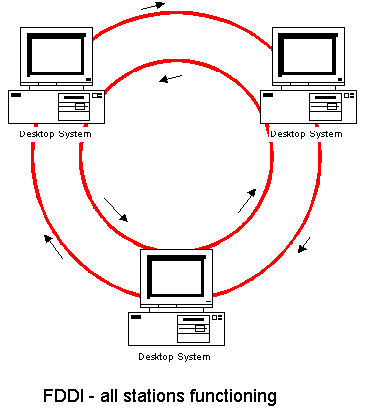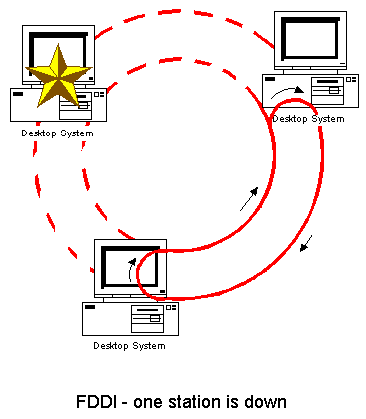Similarities
- FDDI uses a rotating ring setup in the same way as the token ring protocol.
- FDDI's ring operation is basically very similar to the Token Ring early release operation in the way that tokens are passed on the network.
Differences
- As opposed to Token Ring's single ring, FDDI, uses two to achieve better results and less chance of failure.
- In a basic Token Ring network, at any instant there is a single active ring monitor which supplies the master clock for the ring, whereas in FDDI this approach isn't ideal because of the high data rates. Instead, each ring interface has its own local clock, and outgoing data is transmitted using this clock.
- Unlike the basic Token Ring, which is based on the use of priority and reservation bits, the priority operation of the FDDI ring uses a principle that is based on a parameter known as the Token Rotation Time, or TRT.
- FDDI uses a timed token protocol where Token Ring uses priority/reservation token access, leading to differences in frame format and how station traffic is handled
Comparison Chart
Protocol Data Rate Segment Length
Media Rings FDDI
100 Unlimited Optical Fiber 2 IEEE 802.5 4/16 250 Not Specified 1 IBM Token Ring 4/16 250 Twisted Pair 1 Due to its dual ring architecture, FDDI has the ability to recover from link and station failures. If a station goes down, the signals are routed around it by a loop formed from the rings.

